| |
|
Chang Lab Alumni
|

|
John L. Rinn, Ph.D. Postdoc, 2004-2007.
John was Howard's first postdoc. John studied positional identity in skin and discovered long noncoding RNAs in the HOX loci that regulate chromatin states. He was a Damon Runyon Fellow, and became Assistant Professor of Pathology at Harvard Medical School and Associate Member of the Broad Institute of MIT and Harvard.
Email Web Site |
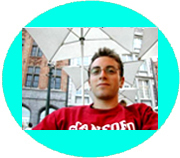
|
Adam S. Adler, Ph.D. Graduate Student, 2005-2008.
Adam was Howard's first Ph.D. student. Adam studied mechanisms underlying gene expression changes in cancer and aging. He identified novel therapeutic targets for aggressive human breast cancers, and he discovered a global regulator of mammalian aging that, upon its blockade, can reverse several effects of aging. He became a postdoc in Gill Bejerano's lab at Stanford University studying computational biology.
Email |

|
Helen Liu, Medical Student, 2005-2008.
Helen was a Stanford medical student and received a Med Scholar award to pursue research in Howard's lab. She studied the transcriptional programs of cellular quiescence and cancer stem cells. Helen became a Dermatology resident at Oregon Health Sciences University.
Email |

|
Jordon Wang, Ph.D. Graduate Student, 2005-2009
Jordon was another founding member of the lab. Jordon characterized HOTAIR, the first noncoding RNA that regulates chromatin state in trans, and study the stability of HOX gene expression programs in human fibroblasts. He also helped to discover and characterize UTX, the long sought after histone H3 lysine 27 demethylase.
Email |

|
Raj Gupta, M.D., Ph.D. Postdoc, 2007-2010
Raj was a post-doctoral fellow in Howard's lab. He studied the role of lincRNAs in modulating the epigenome during cancer development. He is currently working as a co-founder of a start up enterprise in the health care space and practices as a dermatologist in the Bay Area part-time. He remains affiliated with Stanford as a Clinical Assistant Professor of Dermatology.
Email |
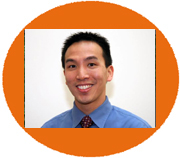
|
David J. Wong, M.D., Ph.D. Postdoc, 2006-2010
Dave was a postdoctoral fellow in the lab studying: 1) mechanisms that underlie cancer stem cells, 2) genomic signatures that predict therapeutic response in human cancer, and 3) the role of ncRNAs in the cell cycle. He became an Assistant Professor of Dermatology at Stanford as well as the co-founder of a health care technology company.
Email |

|
Tiara Kawahara Ph.D. Student 2006-2010
Tiara received her B.S. from Northwestern and joined the lab as a Stanford Cancer Biology Ph.D. student. She discovered the connection between NF-kB, Sirt6, and aging in collaborated with the Chua lab. She is now a consultant specializing in life sciences at LEK Consulting.
Email |
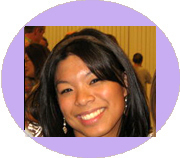
|
Kristine Ong
Undergraduate Student
Email |
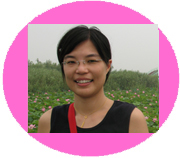
|
Miao-Chih Tsai, Ph.D Postdoc
Miao came to the Chang lab after Ph.D. at Cambridge University with Prof. Julie Ahringer. Miao was a Susan Komen Fellow, and discovered the modular organization of lincRNAs for controlling chromatin state. She became an editor at Molecular Cell.
Email |
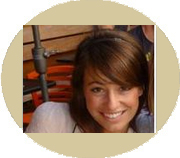
|
Ashley Kern Koegel
M.D., Ph.D Student
Email |

|
Angeline Protacio, Life Science Research Assistant
Angeline was Howard's first Lab Technician. She worked with Kevin Wang to help characterize the HOTTIP lncRNA, and also explored how DNA binding site mutations in Ash2L affect HOX gene expression. She is now pursuing an MPH in Epidemiology at the Mailman School of Public Health at Columbia University.
Email |

|
Yul Yang
M.D., Ph.D Student
Yul received his B.S. from Yale and came to the Stanford M.D.-Ph.D program. He helped to characterize HOTTIP, a lncRNA that mediates active chromatin, and studied its mechanism of function. Yul went back to Stanford Medical School to complete his medical studies.
Email |

|
Kevin C, Wang M.D., Ph.D
Postdoc 2008-2012
Kevin came to the Chang lab after completing his dermatology residency at UCSF, and elucidated the molecular mechanisms underlying how long noncoding RNAs regulate active chromatin domains. He recently started his own research program as an Assistant Professor of Dermatology at Stanford.
Email |

|
Tiffany Hung
Ph.D. Student
Tiffany received her B.S. at Stanford and joined the Cancer Biology Ph.D. program. Tiffany discovered new families of lncRNAs transcribed from cell cycle promoters and in response to DNA damage. These lncRNAs have important roles in cell cycle regulation and damage signaling. Tiffany received the NSF and NSDEG Graduate Fellowships. She is now a postdoctoral fellow at Genentech.
Email |
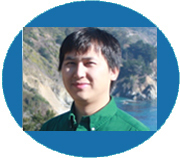
|
Zhengqing Ouyang, Ph.D
Joint postdoc with Prof. Mike Snyder
Zhengqing was a joint postdoctoral fellow in the Chang and Snyder labs. He developed SeqFold, a computational algorithm for accurate reconstruction of RNA structure based on high throughput sequencing data. Zhengqing is now Assistant Professor at the Jackson Laboratory for Genomic Medicine.
Email Web Site |

|
Ashwin Peres-da-Silva
Undergraduate Student
Email |

|
Megan Mikhail
Undergraduate Student
Email |

|
Ray Herrman,
Admin Associate
Email |

|
Nicole Rapicavoli, Ph.D
Postdoc, 2009-2013
Nicole received her Ph.D. at Johns Hopkins University with Prof. Seth Blackshaw. In the Chang lab, Nicole studied the dynamics of gene expression during aging. She discovered a family of lncRNAs that are regulated by inflammatory signaling pathways through NF-kB.
Email |
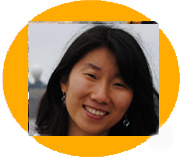
|
Yue Wan
Graduate Student, 2008-2013
Yue received her B.S. from UCSD and joined the Stanford Cancer Biology Ph.D. program with support from the A-STAR program. Yue developed the first methods to measure RNA structure and folding energies genome-wide, and described the first "RNA structurome". She became the first GIS Fellow (junior group leader) at Genome Institute of Singapore.
Email Web Site |
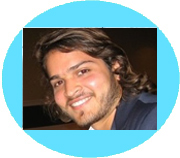
|
Eduardo Torre
Life Science Research Assistant
Eduardo came to the lab after receiving his B.S. from Emory University. He helped to develop new transcriptome-wide methods for RNA structure analysis. Eduardo became a MD-PhD student at University of Pennsylvania
Email |

|
Paul Giresi, Ph.D
Postdoc 2011-2013
Paul received his Ph.D. from University of North Carolina at Chapel Hill with Prof. Jason Lieb. Paul developed a new technology to interrogate chromatin based on DNA transposition called ATAC-seq. He received the American Cancer Society Fellowship, and co-founded EpiNomics, an epigenomic technology company.
Email |

|
Lisa C Zaba M.D., Ph.D
Postdoc 2012-2013
Lisa receive her M.D.-Ph.D. from Cornell and Rockefeller University and completed Dermatology residency at Stanford. Lisa studied the epigenetic basis of skin diseases. She received the Dermatology Foundation Fellowship and became Lead Immunologist at Alector, a biotechnology company
Email |
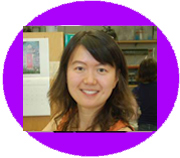
|
Grace Zheng, Ph.D
Postdoc 2010-2014
Grace received her Ph.D. at MIT with Prof. Phil Sharp and Chris Burge. Grace started the studies of transcriptional regulation of lncRNA genes in the lab. Grace received a Leukemia Lymphoma Society Fellowship, and joined a genomics start up company.
Email |
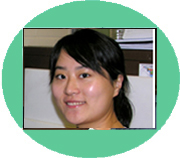
|
Jiajing (Jenny) Zhang, Ph.D
Bioinformatician
Email |

|
Robert Spitale, Ph.D
Postdoc 2010-2014
Rob received his PhD in University of Rochester RNA crystallography. Rob developed new methods to probe RNA structures in vivo on a genomic scale. Rob helped to define the secondary structure of several lncRNAs. Rob received the A.P. Giannini Fellowship, and became Assistant Professor at University of California, Irvine.
Email Web Site |

|
Albert Chen
Undergraduate Student
Email |

|
Ci Chu
Graduate Student, 2009-2014
Chu received his B.S. from Duke and joined the Stanford Cancer Biology Ph.D. program with support from A*STAR. Chu invented ChIRP-seq, the method to map genomic occupancy sites of long noncoding RNAs, and pioneered RNA-centric tools to understand the RNA interactome. He is pursuing postdoctoral research in Dr. Huck-Hui Ng's lab in the Genome Institute of Singapore
Email |

|
Katherine Nabel
Undergraduate Student
Email |

|
Maheetha Bharadwaj
Undergraduate Student
Email |
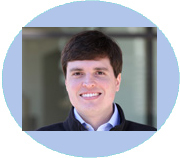
|
Adam Schmitt, MD
Postdoc, 2012-2015
Adam received his MD from University of Chicago and is a physician scientist specializing in Radiation Oncology. He discovered novel functions of long noncoding RNAs induced by DNA damage. He received fellowships from American Society of Clinical Oncology and American Board of Radiology. He joined the faculty and established his independent laboratory at Memorial Sloan Kettering Cancer Center.
Email |
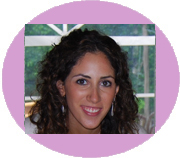
|
Orly Liel Wapinski
Ph.D. Student, 2012-2015
NSF Fellowship
Orly graduated from Brandeis University and joined the lab as a NSF fellow. Orly discovered genomic mechanisms of the direct reprogramming of cell fate from skin cells to neurons, together with Prof. Marius Wernig's lab. She is pursuing a postdoctoral fellowship at NYU.
Email |
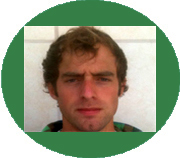
|
Lance Martin
Ph.D. Student, 2012-2015
NDSEG Fellowship
Lance was in the Stanford Bioengineering Ph.D. program and was jointly supervised by Prof. Steve Quake. Lance received the NSDEG fellowship, and he developed new microfluidic and sequencing methods to interrogate RNA-protein interactions and pathogen detection. In his spare time he was also a data sleuth on the patterns of crime in San Francisco. He became a Data Scientist at Uber.
Email |

|
Qiangfeng Cliff Zhang Ph.D
Postdoc
Dean's Fellowship
Cliff received a Ph.D. degree in Computer Science from University of Science and Technology of China and another Ph.D. degree in Biophysics from Columbia University. He co-developed the high throughput profiling techniques for RNA structures and interactions. He received the Dean fellowships from Stanford. He joined the faculty and established his independent laboratory at Tsinghua University in China.
Email |
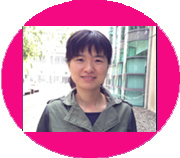
|
Hua Wang, MS
Bioinformatician
Email |

|
Michelle Longmire Ph.D
Postdoc
Email |
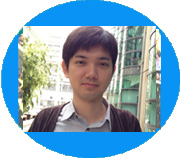
|
Masahiro Onoguchi Ph.D
Postdoc
Uehara Fellowship
Email |

|
Elaine Kuo
Undergraduate Student
Email |

|
Jason D. Buenrostro
Joint Ph.D. student with Prof. Will Greenleaf, Dept. of Genetics
NSF Fellowship
Jason was a joint Ph.D. student in with Howard and Prof. Will Greenleaf. Jason invented ATAC-seq and single cell ATAC-seq, and he also developed a technology for massively parallel RNA mutagenesis and biochemistry (RNA-MaP). Jason became a Junior Fellow of the Harvard Society of Fellows and a Broad Fellow at the Broad Institute at Harvard and MIT.
Email |

|
Jeffrey Quinn
Ph.D. Student
Bio-X Fellowship
Jeffrey received his B.S. from MIT in Biological Engineering in 2006, and joined Stanford's doctoral program in the Department of Bioengineering in 2010. During his career in the Chang Lab, he developed biochemical and computational tools for studying lncRNA interactions, functions, and evolution, particularly focused on the roX lncRNAs in Drosophila dosage compensation. He is currently pursuing postdoctoral research in Dr. Jonathan Weissman's Lab at the University of California, San Francisco.
Email |

|
Brian Tshao Do
Undergraduate Student
Brian received his B.S. in biology and computer science from Stanford. During his time in the Chang lab he studied the transcriptional regulation and function of noncoding RNAs and developed computational tools to look at RNA-protein interactions and epigenomics. He is currently pursuing a MD-PhD at the Harvard/MIT Medical Scientist Training Program.
Email |

|
Byron Lee
Life Science Technician
Byron developed methods for in vivo measurements of RNA structure across the transcriptome. Byron went on to join the PhD program in Biology at MIT.
Email |
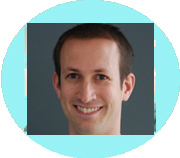
|
Nathan Sheffield Ph.D
Postdoc
Nathan was a Human Frontier Science Program Fellow who developed computational methods to study the human epigenome. He is now a faculty member at University of Virginia School of Medicine.
HFSP Long-term Fellowship
Email |

|
Kun Qu, Ph.D
Sr. Bioinformatics Scientist
Kun was a senior bioinformatician in the Chang lab. He pioneered bioinformatic methods to interrogate RNA structurome and personal regulomes. Kun became a Professor at University of Science and Technology of China and received the Thousand Talents Plan award.
Email |
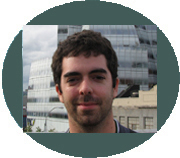
|
Pedro Jorge de Oliveira Rodrigues Batista, Ph.D
Postdoc
Damon Runyon Fellow
Pedro came to the lab after Ph.D. training with Prof. Craig Mello at U. Massachusetts. In the Chang lab, Pedro discovered the role of RNA N6-methyladenosine modification in stem cell differentiation and cancer. Pedro reeceived the Damon Runyon Fellowship, and became a NIH Stadtman Investigator at the National Cancer Institute.
Email |
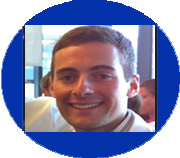
|
Ryan Alexander Flynn
M.D., Student
MSTP and NRSA Fellowship and Damon Runyon Fellows
Ryan is an MD-Ph.D. student and completed his Ph.D in the Chang lab. Ryan came to Stanford after undergraduate research at MIT with Prof. Phil Sharp. In the Chang lab, Ryan developed transcriptome-wide methods of mapping RNA structure, RNA-protein interactions, and insights into enhancer RNA elongation. Ryan received the Hal Weintraub Award for Graduate Students and the Scaringe Award of RNA Society. Ryan is pursuing is postdoctoral research with Prof. Carolyn Bertozzi.
Email |
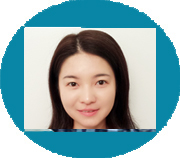
|
Ying Shen, Ph.D
Bioinformatician Scientist
Email |

